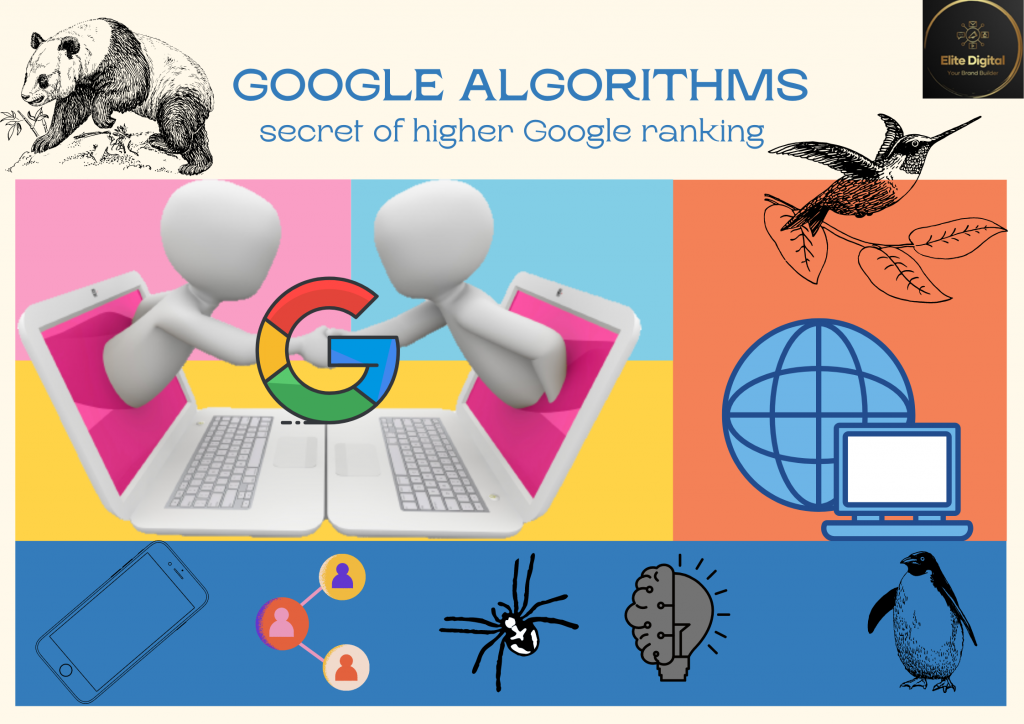
Search engines keep improving their algorithms day by day to give their users the best possible results. That’s why Google introduced several major/minor updates, which make a significant impact on the working method for SEO. In this post, you will have a list of Google’s pivotal algorithm updates we had till now and also some affects they have on the Search Engine Optimization.
2011-Panda
Google’s first major update was Panda, which paved the path to modern SEO. This update was done to deal with the webpages/websites which are created solely to make web-presence. Owing to this update, mainly two types of sites got adversely affected.
1. Sites that did key-word stuffing and had thin-content
2. Sites that have user-generated spam
2012-Venice
Venice update by Google was the one of the significant updates. From the experience, Google understood that the internet users are looking forward to know the about the product and services that are around them. After Venice, Google’s SERPs started showing the webpages based on the in searcher’s location or IP address.
2012 Penguin
Google launched penguin update intending to see what type of links website is receiving from another website. With this, Google could analyze if the created back links are genuine, or were created via black hat techniques. In the bygone times, many businesses started paying for paid links as a shortcut for a quick boost in their rankings. With this update, all such practices got discouraged. Because Penguin update has multifarious advantages and ran many times, Google made it part of its core algorithm later in 2016. As a result to of tthe update, many websites with spam or artificially created links got a negative ranking rather than positive.
2013-Hummingbird
Search algorithm improved leaps and bounds after the Hummingbird update by Google. Rather than focusing on specific words, Hummingbird considers the whole search phrase rather than just a few. What’s the reason? By understanding the user’s query better, we can give them the most relevant results rather than just a list.
The document reiterated the need for SEO copy to be readable, to use natural language, and not to over-optimize for a few words, but to use synonyms instead.
2014-HTTPS/SSL
Google gave a ranking boost to sites that correctly implemented HTTPS. This ensures a secure connection between website and user. Initially, HTTPS was introduced as a lightweight ranking signal and at present Google had implied that encryption might be made more important once webmasters had implemented it.
2015-RankBrain
The RankBrain algorithm applies machine learning techniques to handle queries to provide the most relevant results. With the help of this update, the system can make guesses about words it doesn’t know and find words with similar meanings. I mean to say, the algorithm analyzes past searches and determines the best result. Google has taken another big step toward better understanding searches and serving the best results to users. The only way you can optimize for RankBrain is to keep your content quality, as you can’t optimize for other ranking factors. However, the impact of these changes is undeniable.
2016-Possum
Google’s Possum update improved its local search algorithm by modifying its local ranking filter. Possum made local results more variable, depending more on the location of the searcher and how the query was phrased. After this update, businesses that have had difficulty ranking in organic search found it easier to rank locally. This update made local search more independent of organic results.
2018–(Mobile) Speed Update
Since users are on mobile devices and need to gain even more information as quickly as possible, Google launched an update that makes page speed a ranking factor for mobile searches, as it was already the case for desktop searches. The update primarily affected sites with particularly slow mobile versions.
2019-BERT
With no qualm, BERT is conceptually simple and empirically powerful. It was the biggest change that Google did of last five years. BERT- Bidirectional Encoder Representations from Transformers is a transformer-based machine learning technique for natural language processing (NLP) pre-training developed. It’s a machine learning algorithm, a neural network-based technique for natural language processing (NLP).
Google designed BERT in such a way that it can learn the context between the words or sub words in a text.
2021–Page Experience Update
With expanding technology and customer base, Google introduced a new ranking metric that measure how your page performs based on real-world data usage. Parameters that Google considers for ranking are loading performance, interactivity, and visual stability. Along with incumbent page experience signals, the Core Web Vitals will give the comprehensive overview of the user experience.
You can monitor your Core Web Vitals and Page Experience in Search Console and make actionable improvements by using these dedicated tools.
To sum up, understanding the Google Algorithm is the half SEO task done. If you are looking for expert advice for synchronizing your website to Google algorithm, contact Elite Digital, the best SEO Company in Ludhiana.




More Stories
Grow Any Business : Email Marketing Services | 2024
Mobile SEO Guide: Ways to Improve Mobile Ranking
How Digital Marketing Actually Works